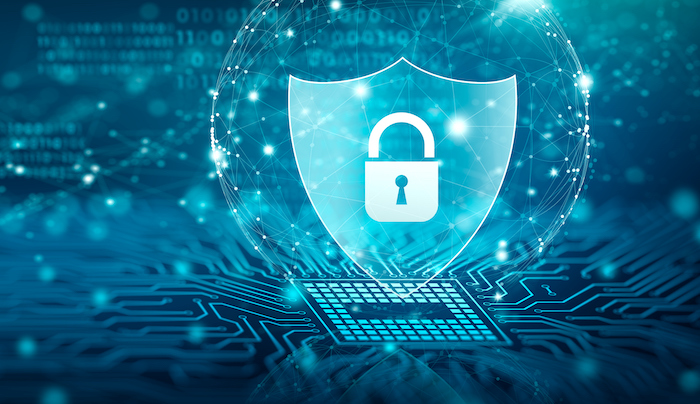One of the most important keys to developing long-lasting, mutually beneficial business relationships involves building an impervious level of trust that withstands all types of economic climates. In the world of digital security that is handled by your IT team, a zero-trust approach to identity management is the most effective way to protect digital assets.
In 2010, Forrester analyst John Kindervag created the term “Zero Trust” during a research project. The conclusion of Kindervag’s research stated that all digital network traffic should not be trusted and instead, every attempt to access digital information should be verified and monitored by implementing secure technology.
If you boiled the meaning of “Zero Trust” into a one-minute egg, it would encompass the goal of keeping privately accessed data secure by integrating advanced digital authentication and authorization tools. However, as you are about to find out, establishing a zero-trust framework is much more than a one-sentence definition.
What Is a Zero-Trust Security Framework?
Also called a zero-trust security model, a zero-trust digital security network is defined according to NIST 800-207 as a technology infrastructure that implements stringent security controls that follow several criteria.
Never Trust, Always Identify
The core principle of a zero-trust approach to digital data involves not giving access to any user, device, or resource to digital information until a zero-trust framework verifies the legitimacy of the user, device, or resource trying to gain access. A zero-trust framework not only must confirm access, but also monitors and controls the information accessed by another party.
Provide Minimum Access
Once a user, device, or resource tries to gain access to certain digital data, a zero-trust security framework provides just enough access for a user, device, or resource to accomplish their digital information goals. This means a zero-trust network presents the bare minimum amount of data to ensure optimal digital security.
One-Hundred Percent Visibility
One of the persistent and often costly flaws of securing digital data is that vulnerable systems have no way for IT professionals to monitor security consistently. Developing a zero-trust framework requires constant monitoring by an IT professional to prevent access to highly-sensitive and frequently proprietary digital information.
Uniform Security Policy
Constantly monitoring digital information is achieved via a zero-trust framework by requiring all IT professionals to follow a centralized digital security policy. Following a centralized digital security policy allows IT professionals to identify users, devices, or resources across many different enforcement points of a digital network platform.
What Are the 7 Components of a Zero Trust Framework System?
The zero-trust approach to securing digital data is even more relevant in today’s technology world based on a rapidly growing reliance on cloud computing. Sharing computing resources requires your organization to adopt a zero-trust framework consisting of seven key elements.
All Digital Information is Considered Resources
The foundation of any successful zero-trust framework concerns treating all digital data as potential sources ripe for exploitation. From gaming apps to highly-sensitive proprietary data, your organization should consider every digital resource vulnerable to theft, corruption, and exploitation.
Secure Every Form of Communication
One of the most effective strategies for digital data thieves is to breach the most insecure types of communication, Whether it is text, phone, or email messages, your organization must protect all forms of communication by using tools such as encryption and perimeter security.
Allow Access to Data One Session at a Time
The most flagrant examples of digital data security breaches negatively impact organizations that grant unlimited access to their most sensitive digital data. A successful zero-trust framework grants access to digital data for a limited amount of time. It also requires users, devices, and resources to complete the same login process every time a request is made to access digital information.
Fluid Access Policy
A zero-trust framework should include security technology that determines data access based on fluid parameters such as date, time, and/or location. For example, you can set up a digital data security system that grants access only during a short window that runs every Sunday morning from a specific time zone. You also can implement behavioral biometrics to create a fluid access policy.
Monitor and Verify 24/7
An effective zero-trust framework never sleeps, which means you must establish a system that monitors all attempts at digital data access 24 hours a day, seven days per week. Your organization should never consider any user, device, or resource to be trustworthy to avoid threats from APTs, as well as from highly advanced cyberattacks.
Strictly Enforce Authentication and Authorization Policies
Following a two-factor authentication model for securing digital data appears to be a solid system for preventing outside intrusions into your computer network. However, you must use an ongoing authentication and authorization tool such as Identity, Credential, and Access Management (ICAM) to allow users, devices, and resources to regain access to your organization’s computing network.
The Bottom Line: Treat Zero Trust Framework as a Never-Ending Project
As digital technology continues to advance in complexity, the same principle applies to the actions of cyber criminals that want to gain access to your most vital digital information. Establishing a highly-secure zero trust framework for your organization is not a one-and-done deal. You have to make digital security improvements on a regular basis.
Additional Cybersecurity Resources
The Definitive Guide to Zero Trust Security
The Role of Identity Management in Strengthening Cybersecurity Defenses



0 Comments